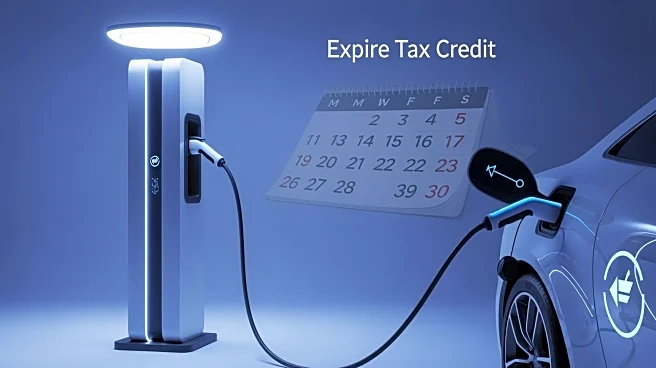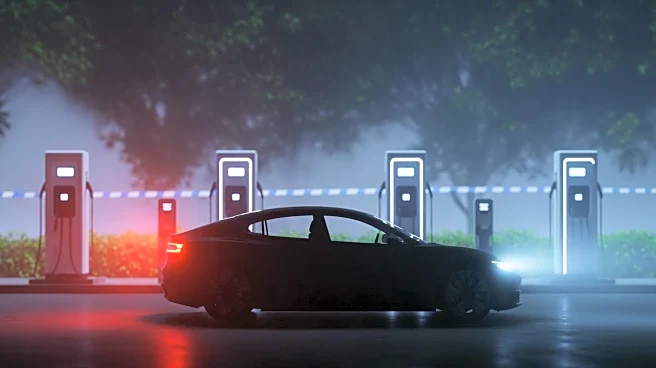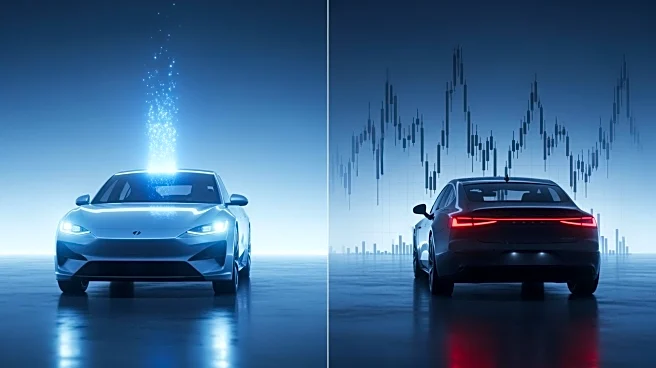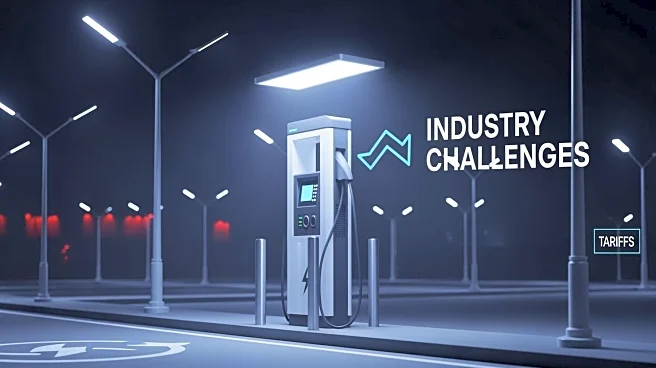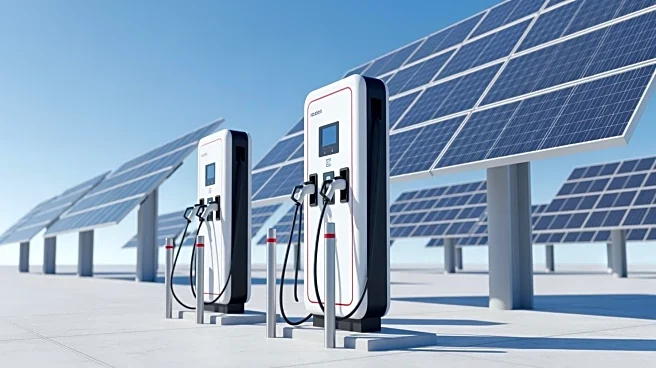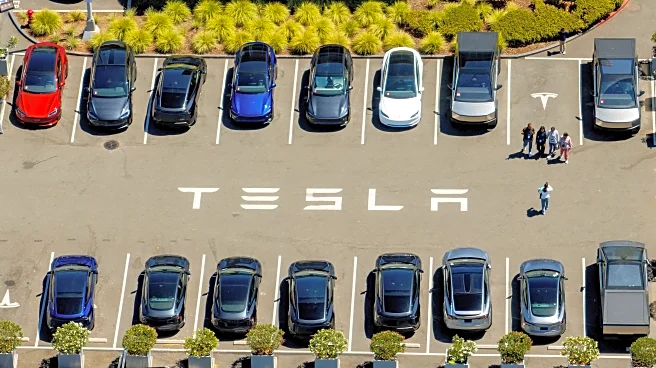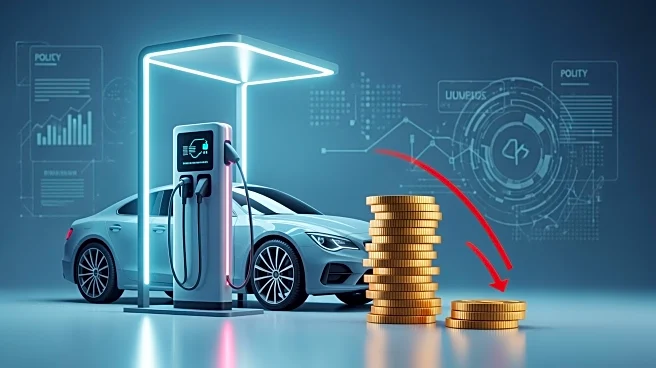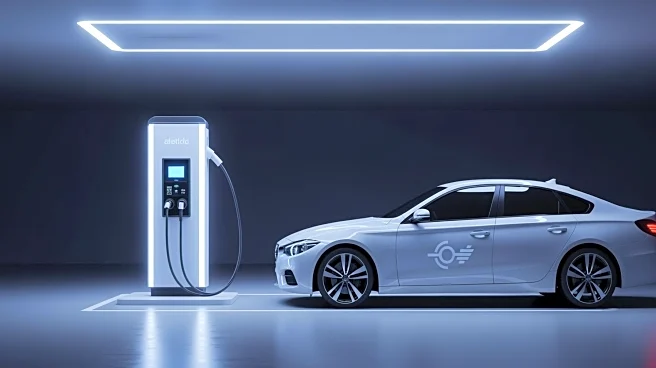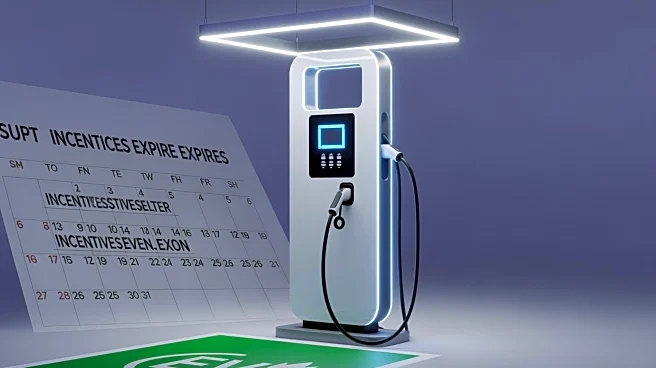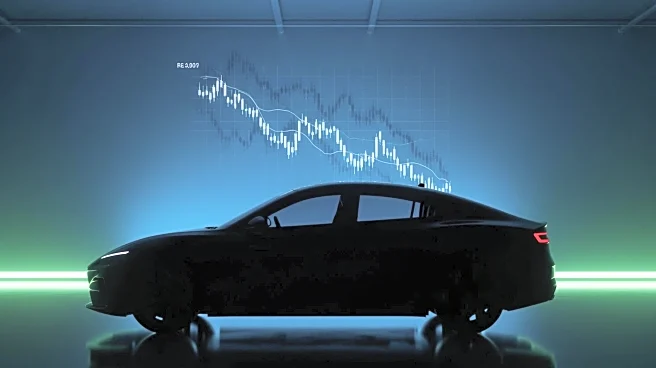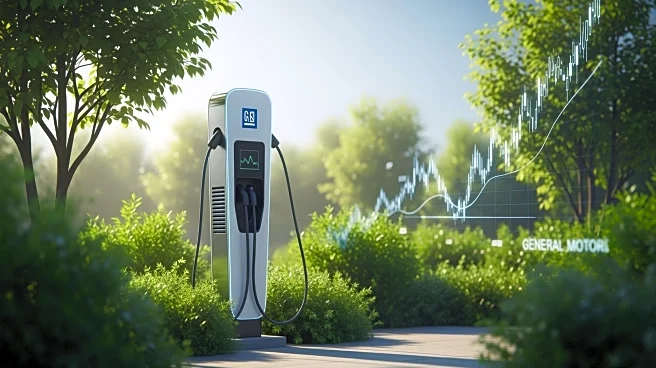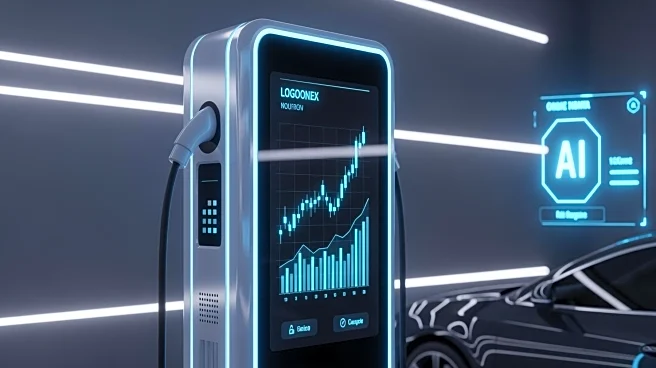What's Happening?
Tesla has announced a decline in its third-quarter net income to $1.39 billion, despite a 12% increase in revenue. This financial outcome is largely attributed to a rush by U.S. buyers to purchase electric vehicles (EVs) before the expiration of the federal
EV tax credit on September 30. Tesla achieved a record 497,099 deliveries during this period, driven by consumers eager to benefit from the tax incentive. The expiration of the $7,500 federal tax credit has created a significant impact on the EV market, influencing consumer behavior and sales dynamics.
Why It's Important?
The expiration of the federal EV tax credit is a pivotal moment for the electric vehicle industry in the United States. Tesla's surge in sales highlights the importance of government incentives in driving consumer adoption of EVs. The decline in net income, despite increased sales, suggests that while incentives can boost sales volume, they may not necessarily translate into higher profitability. This development could influence future policy decisions regarding EV incentives and impact the strategies of automakers as they navigate the evolving market landscape. Companies like Tesla may need to adjust their pricing and marketing strategies to maintain sales momentum in the absence of tax credits.
What's Next?
With the expiration of the tax credit, automakers and policymakers may need to explore alternative incentives to sustain the growth of the EV market. Tesla and other manufacturers might focus on enhancing vehicle features, reducing production costs, or offering new financing options to attract buyers. Additionally, the industry could see increased lobbying efforts for the reinstatement or introduction of new incentives to support EV adoption. The response from consumers and the industry will likely shape the future trajectory of EV sales and the broader transition to sustainable transportation.
Beyond the Headlines
The expiration of the EV tax credit raises broader questions about the role of government incentives in promoting sustainable technologies. It highlights the delicate balance between encouraging innovation and ensuring market stability. The situation underscores the need for comprehensive policies that support long-term environmental goals while fostering economic growth. As the industry adapts, there may be increased focus on developing infrastructure, such as charging stations, to support the growing number of EVs on the road.
